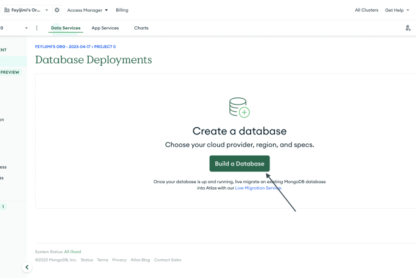Have you ever wondered how large-scale applications like Netflix, Amazon, and Airbnb manage to stay online and available 24/7, even during unexpected failures or natural disasters? The answer lies in their use of high availability, fault tolerance, and disaster recovery strategies on the AWS (Amazon Web Services) platform.
AWS provides a wide range of services that enable businesses to build and operate highly available and fault-tolerant systems while ensuring the ability to recover from disasters. These concepts are important for companies that rely on their IT infrastructure, as even a small downtime can significantly impact their bottom line.
This article will provide an overview of high availability, fault tolerance, and disaster recovery in the context of AWS. You will understand the importance of each concept and explore the AWS services that can help you achieve them. Whether you are just starting with AWS or looking to improve your existing infrastructure, this article will provide a beginner-friendly introduction to the key concepts and strategies for maintaining uptime and protecting your data in the AWS cloud.
High Availability: Definition, Importance, and Methods of Achieving it in AWS.
Imagine that you are a business owner running a store. You want to ensure your store is always open and available to customers, even if something unexpected happens, like a power outage or a natural disaster. You want to maintain sales and satisfy your customers because something out of your control happened.
High availability is like having a backup plan in case something goes wrong. It means your store (or website, application, or any other system) is designed to keep running and be available to customers, even if something unexpected happens.
High availability is a term that most people think they understand. People assume that making a system available means ensuring that the system never fails or that the system’s user never experiences any outages, which is false. High availability is designed to be online so that when it fails, its components can be replaced or fixed as quickly as possible, often using automation to bring systems back into service.
For example, if your store has an online presence, you might have a website that customers can visit to buy your products. If your website is designed for low availability, it might go down if there is a sudden surge in traffic or if one of the servers that host your website fails. Customers would need help accessing your website, and you would lose sales.
However, if your website is designed for high availability, it will continue running even if one server fails because it is hosted on multiple servers in different locations. If one server fails, the others will take over and keep your website running.
Importance of High Availability
- High availability helps to ensure that your system or application remains operational and accessible even in the face of failures or disruptions. Without high availability, your system or application may experience downtime, resulting in lost revenue, productivity, and reputation damage.
- High availability can be achieved through redundancy and failover mechanisms, such as replicating data across multiple servers, deploying applications in various availability zones, and using load balancers to distribute traffic across multiple instances.
- High availability is particularly important for mission-critical applications, such as those used in healthcare, finance, or government, where downtime can have serious consequences.
- High availability requires careful planning, design, and ongoing monitoring and testing to ensure failover mechanisms work as expected.
- By investing in high availability, you can improve the reliability and resiliency of your system, which can ultimately lead to increased revenue, productivity, and customer satisfaction.
Methods of Achieving High Availability in AWS
- Elastic Load Balancing: AWS Elastic Load Balancing (ELB) distributes traffic across multiple Elastic Compute Cloud (EC2) instances to ensure high availability.
- Auto Scaling: AWS Auto Scaling automatically adds or removes EC2 instances based on demand to ensure that the system can handle fluctuations in traffic.
- Multi-AZ Deployments: Deploying the application across multiple Availability Zones (AZs) in the same region ensures it is available even if one AZ goes down.
- Cross-Region Replication: Replicating data across multiple regions ensures data is available even if one region goes down.
- Failover and recovery: AWS services such as Route 53 and Amazon RDS Multi-AZ quickly detect failures and failover to a redundant system to ensure high availability.
- Continuous Monitoring: AWS CloudWatch provides continuous monitoring for performance and availability and can send alerts and notifications to identify and address issues quickly.
- High availability databases: Use AWS services such as Amazon RDS Multi-AZ, Amazon Aurora, or Amazon DynamoDB to ensure high database availability.
- Resilient Network Architecture: Using AWS services such as Amazon VPC, AWS Direct Connect, and Amazon CloudFront to create a resilient network architecture that can withstand network failures and maintain connectivity and availability.
Fault Tolerance: Definition, Importance, and Methods of Achieving it in AWS.
When people think of high availability, they mix it with fault tolerance. It is similar to high availability, but it is much more. A fault-tolerant system is designed to work normally even if one or more components fail. If a system has faults, it could be one or more multiple faults, and then it should continue to operate properly even while those faults are being fixed. Fault tolerance is about designing and building systems that won’t stop working during breakdowns or disruptions. You may reduce the risk of downtime and ensure that your system is available and responsive to users by implementing fault tolerance into your system architecture.
Imagine you are in charge of a hospital’s computer system that manages patient records and appointments. The system consists of several servers that are connected to a network. One day, a power outage occurs in the hospital’s area, and the servers shut down. The system would become unavailable, causing chaos and potentially risking patients’ lives.
However, if the system were designed with fault tolerance, the servers would be set up to continue functioning even during a power outage. For example, the servers could be equipped with battery backups or diesel generators to keep them running until power is restored. In addition, the system could be set up with redundant servers that automatically take over if one server fails.
With these fault-tolerant measures in place, the hospital’s computer system can continue to operate even in the face of unexpected events like power outages. This ensures that patient records and appointments can still be accessed and that doctors and nurses can provide critical care without interruptions.
You need to understand what your customer requires. Fault tolerance is harder to design, harder to implement and costs much more, and takes longer to implement. Conversely, implementing high availability when you need fault tolerance puts lives and resources at risk.
Importance of Fault Tolerance
- Fault tolerance ensures that key systems remain operational and responsive despite failures or disruptions.
- By incorporating fault-tolerant measures such as redundant servers and backup power supplies, organizations can minimize the risk of downtime and ensure that operations continue uninterrupted.
- Fault tolerance is particularly important in healthcare, finance, and transportation industries, where even brief interruptions can have serious consequences.
- Organizations may experience revenue and productivity and prevent reputation damage with fault tolerance.
- Fault tolerance is also a critical component of disaster recovery planning, as it allows organizations to quickly recover from unexpected events such as natural disasters or cyberattacks.
Methods of Achieving Fault Tolerance in AWS
- Auto Scaling: Using AWS Auto Scaling to add or remove instances based on demand automatically helps ensure that the system can handle fluctuations in traffic and minimize the impact of any failures.
- State Management: Managing stateful resources such as databases or file systems in a way that enables them to be replicated across multiple instances so that if one instance fails, the system can continue to function without disruption.
- Health monitoring and Remediation: Monitoring the health of resources and automatically remediating any issues. AWS services such as Amazon CloudWatch and AWS Systems Manager can monitor resource health and trigger automated remediation.
- Graceful Degradation: Rather than failing abruptly, systems should be designed to reduce functionality in the case of a failure gently. This can minimize the impact of a failure and allow the system to continue functioning at a reduced level.
- Backups and Disaster Recovery: Implement backup and disaster recovery strategies that ensure critical data is replicated and available during a failure. AWS services such as Amazon S3 and AWS Backup can be used to create backups and implement disaster recovery strategies.
Disaster Recovery: Definition, Importance, and Methods of Achieving it in AWS.
While High availability and Fault tolerance are about designing systems to cope or operate through a disaster, Disaster Recovery is about what to plan for and do when a disaster knocks out a system. It is about what happens before (pre-planning) and what happens afterwards. The worst time for any business is recovering in the event of a major disaster. In that type of environment, bad decisions are made based on shock, lack of sleep, and fear of how to recover.
Disaster recovery refers to restoring a system or application to its normal state after a catastrophic event, such as a natural disaster, cyberattack, or power outage. Think of it as a backup plan for your backup plan. Just like you might have a backup plan in case your phone or laptop stops working, disaster recovery is a plan in case something goes catastrophically wrong with your system.
Disaster recovery plans typically involve backing up data and applications regularly and storing them securely. In addition, they often include procedures for restoring data and applications to their original state and processes for testing the recovery plan to ensure it is effective.
Disaster recovery is important because it helps to ensure business continuity in the face of unexpected events. Organizations can minimize the risk of downtime by having a disaster recovery plan and ensuring that critical systems can be restored quickly during a catastrophic event. This can help to prevent or minimize financial losses, damage to reputation, and other negative consequences.
Imagine you’re a small business owner who runs an online store selling handmade goods. Your store’s website is hosted on a server in a data centre, and you rely heavily on it to generate revenue.
One day, a natural disaster, such as a hurricane or earthquake, strikes the area where your data centre is located, and the server is damaged beyond repair. With a disaster recovery plan, your website and all its data would be recovered, and your business could avoid significant financial losses.
However, because you had a disaster recovery plan, your data was regularly backed up to a separate server in a different geographic location. This backup server also had redundant power supplies and other measures to ensure it remained available during an outage.
After the disaster, your IT team quickly restored your website and all its data from the backup server, minimizing downtime and preventing significant financial losses.
This is a real-world illustration of how disaster recovery can help businesses to minimize the impact of unexpected events and ensure business continuity. Organizations can quickly recover from disasters and resume normal operations by having a plan and regularly backing up data to a secure location.
Importance of Disaster Recovery
- Ensures business continuity: By having a plan to quickly restore systems and applications to their normal state after a catastrophic event, organizations can minimize downtime and ensure they can continue to operate.
- Prevents financial losses: Downtime and data loss can be costly for businesses. Organizations can minimize the risk of financial losses due to unexpected events by having a disaster recovery plan.
- Protects a company’s reputation: If a business cannot recover from a disaster and suffers extended downtime or data loss, it can damage its reputation and negatively impact its relationships with customers, partners, and vendors.
- Helps businesses comply with regulations: Certain industries and jurisdictions may have regulations requiring businesses to have a disaster recovery plan in place to protect sensitive data or critical systems.
- Best practice for IT: Incorporating disaster recovery planning into an organization’s overall IT strategy is a best practice that can help ensure the security and reliability of systems and applications.
Methods of Achieving Disaster Recovery in AWS
- Backup and Recovery: Creating regular backups of critical data and applications and implementing disaster recovery strategies that enable the quick restoration of those backups in the event of a disaster.
- AWS Disaster Recovery Services: AWS offers several disaster recovery services, including AWS Backup, AWS CloudEndure Disaster Recovery, and AWS Disaster Recovery Hub, that can help organizations implement robust disaster recovery strategies.
- Multi-Region Deployments: Deploy critical applications and services across multiple regions to ensure that they remain available in the event of a disaster in one region.
- Replication and Failover: Replicating critical data and applications to a secondary location and setting up failover mechanisms that quickly switch traffic to the secondary location in a disaster.
- Testing and Validation: Regularly testing disaster recovery plans and procedures to ensure that they work as expected and making any necessary adjustments based on the results of those tests.
Conclusion
High availability, fault tolerance, and disaster recovery are essential concepts for any business operating in the digital age. With the rise of cloud computing and platforms like AWS, it’s now easier to implement these strategies and ensure that your systems are always available and your data is always protected.
By leveraging AWS services like Elastic Load Balancing, Amazon S3, and AWS Backup, businesses can achieve high availability, fault tolerance, and disaster recovery cost-effectively and scalable. As a beginner-friendly platform, AWS provides various resources and documentation to help users understand and implement these concepts.
Whether you’re a small business just starting or a large enterprise looking to improve your IT infrastructure, it’s crucial to prioritize high availability, fault tolerance, and disaster recovery. By doing so, you’ll be able to ensure the longevity and success of your business in the face of unexpected challenges.




